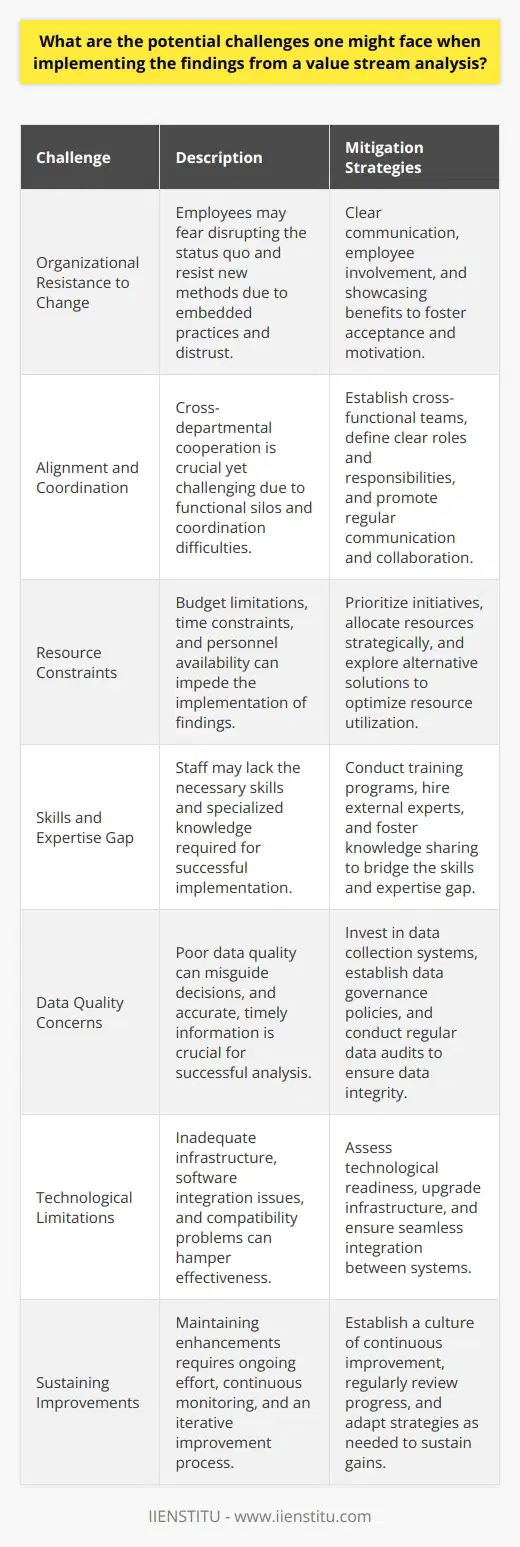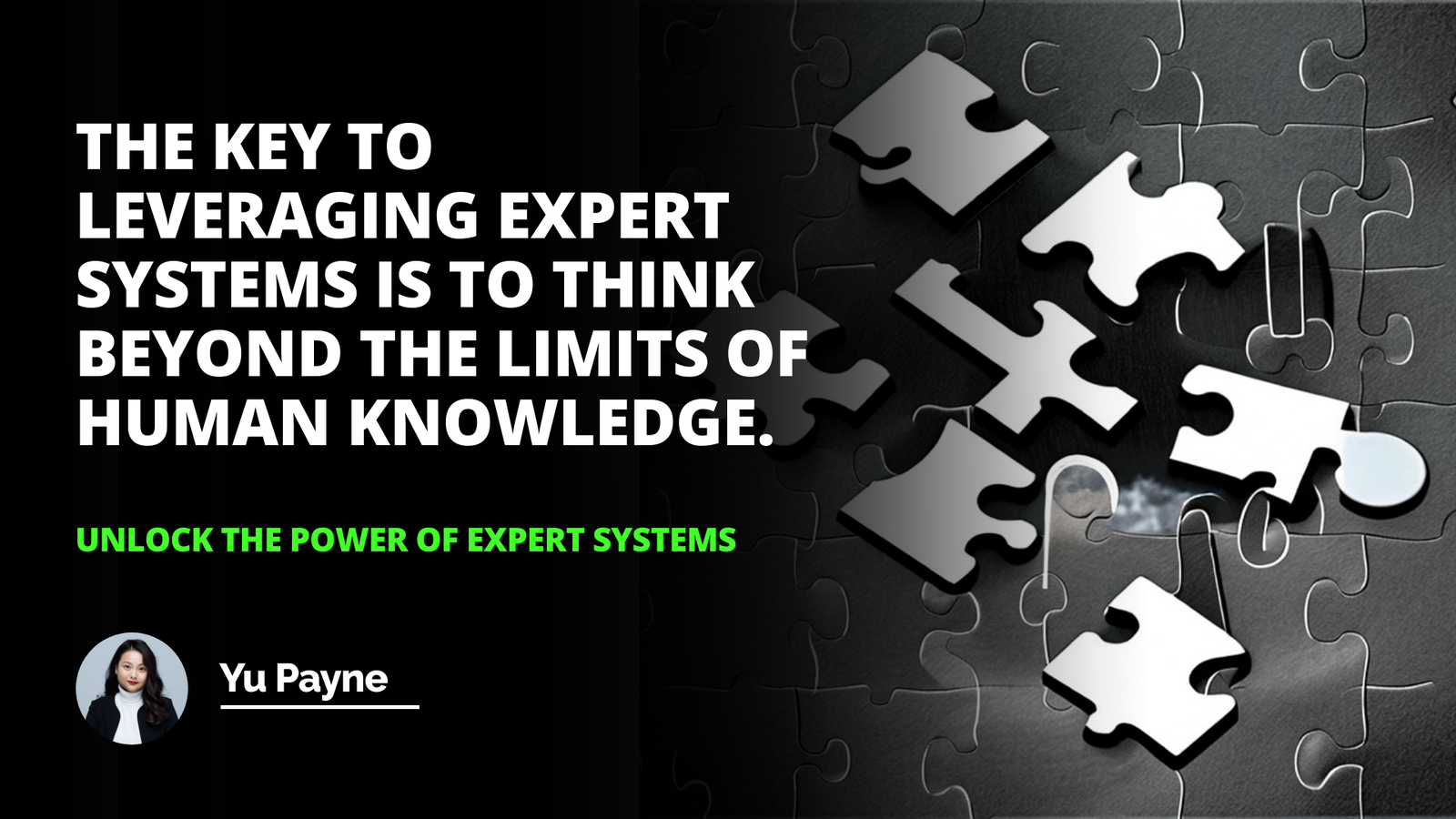
In the dynamic and ever-evolving landscape of business operations, there exists a crucial element that holds the power to streamline processes, enhance efficiency, and ultimately provide a competitive edge--value stream analysis. This meticulous process goes beyond mere assessment; it is a transformative approach that identifies and eliminates inefficiencies within the operational continuum. Value stream analysis stands as a revered ally for businesses striving to deliver maximum customer value while nurturing a culture that embraces lean management principles. In this comprehensive exploration, we will delve into the profound depths of value stream analysis, unraveling its concept, application, and its unparalleled significance in sculpting the pinnacle of operational efficiency.
Definition and Concept of Value Stream Analysis: At its core, value stream analysis is the strategic examination of the flow of materials and information required to bring a product or service from inception to the customer. It encapsulates an overarching view of both the material and informational path, spotlighting areas marred by waste or non-value-adding activities. Through value stream analysis, organizations can discern the actual value being delivered to customers and make informed decisions that enhance this value.
Historical Background and Evolution of Value Stream Analysis: Tracing back its lineage to the lean manufacturing principles developed by Toyota, value stream analysis has evolved into a universal business tool. It has transcended its initial automotive confines, permeating industries far and wide. Born from the meticulous observations of process flow and waste within manufacturing activities, it has grown into a philosophy that venerates the primacy of customer value in all business processes.
Purpose and Goal of Conducting Value Stream Analysis: The aim of conducting a value stream analysis is to fathom the current state of operations and carve out a 'future state' that exemplifies optimal performance. Through systematic identification and removal of waste, businesses can focus on processes that truly add value, thereby aligning their operations more closely with customer desires and expectations.
Understanding Value Stream Analysis
Customer Value: At the epicentre of value stream analysis is the concept of customer value—what the customer is willing to pay for. Recognizing customer value is pivotal to determining which steps in the process are beneficial and which are extraneous.
Value Stream Mapping: Value stream mapping is the visual tool utilized in the value stream analysis to chart out all the processes involved in delivering the final product or service. It underlines the current state and helps to crystalize the pathway towards an improved future state.
Flow: The focus on flow within the value stream is quintessential in ensuring that work moves seamlessly and efficiently from one process to the next. Disruptions to the flow are indicative of waste and are targets for improvement.
Pull and Perfection: The principles of pull and perfection are intertwined with value stream analysis. "Pull" involves orchestrating production based on actual demand, thereby reducing excess inventory. "Perfection" is the enduring pursuit of waste elimination, with the objective to ameliorate every process continuously.
Definition and Concept of Value Stream Analysis
At its core, value stream analysis is the strategic examination of the flow of materials and information required to bring a product or service from its inception to the customer. It encompasses a holistic view of both the material and informational path, highlighting areas afflicted by waste or non-value-adding activities. Through value stream analysis, organizations can discern the true value being delivered to customers and make informed decisions that enhance this value.
Selection of Product Family: The inception of value stream analysis involves selecting a group of products that go through similar processing steps. This categorization enables a more cohesive and manageable analysis.
Current State Mapping: Current state mapping entails a comprehensive examination of the existing process flow, identifying all activities that do, and importantly, do not add value from the consumer's perspective.
Future State Mapping: Following the assessment of the current state, businesses embark on devising a future state map—a blueprint that envisages a more streamlined process flow with minimized waste.
Creation of an Implementation Plan: With a compelling vision of the future state, an implementation plan serves as a tactical guide for transitioning from the current state. This includes timelines, resources, and clearly defined milestones.
I vividly recall my first encounter with value stream analysis during my early days as a management consultant. I was tasked with optimizing the operations of a manufacturing company that was grappling with long lead times and customer dissatisfaction. As I delved into the intricacies of their processes, armed with the tools of value stream analysis, I discovered a myriad of opportunities for improvement. By meticulously mapping out their current state and identifying areas of waste, we collaboratively crafted a future state that not only streamlined their operations but also elevated the value they provided to their customers. It was a transformative experience that solidified my belief in the power of value stream analysis.
Long Tail Keyword For Product Planning İn Supply Chain Management
Maximizing Material Storage With Logistics Management Strategies.
Impact on Operational Efficiency: The palpable impact of value stream analysis on operational efficiency is undeniable, aiding in the reduction of lead times, optimization of workflows, and minimization of waste—all contributing to a more agile and responsive operation.
Enhancement of Customer Value: Through meticulous scrutiny and refinement of processes, value stream analysis unequivocally augments customer value, by delivering higher quality products or services at a quicker pace and often at a reduced cost.
Improvement in Product Quality: Quality improvement is a natural byproduct of value stream analysis. As non-value-adding steps are eradicated and processes are optimized, the incidence of defects diminishes, leading to a superior end product.
Financial Benefits for the Organization: Organizations that implement value stream analysis commonly experience appreciable financial benefits. This stems from the elimination of waste and subsequent reduction in costs, alongside the potential for increased revenue due to enhanced customer satisfaction and loyalty.
Case Study: Successful Implementation of Value Stream Analysis: The real-world efficacy of value stream analysis is demonstrable through myriad case studies across diverse industries, from healthcare to aeronautics. These case studies exhibit significant gains in performance metrics post-implementation of value stream analysis.
Common Pitfalls in Value Stream Analysis: Value stream analysis, while powerful, is not without its limitations. For instance, the scope may be too narrowly focused, excluding peripheral but influential factors, or there might be an overemphasis on tool utilization rather than on broader philosophical changes.
Strategies to Mitigate Risks and Overcome Challenges: Adopting a holistic view that encompasses the entire value stream, including both direct and ancillary activities, along with fostering a culture that prioritizes lean thinking across the organization, can help mitigate such risks.
Importance of Continuous Improvement and Refinement: The concept of "Kaizen", or continuous improvement, is integral to value stream analysis. This philosophy ensures that value stream analysis is not a one-time project but a dynamic, ongoing process that adapts and evolves along with the business landscape.
Historical Background and Evolution of Value Stream Analysis
Tracing its lineage back to the lean management principles pioneered by Toyota, value stream analysis has evolved into a universal business tool. It has transcended its initial automotive confines, permeating industries far and wide. Born from the meticulous observations of process flow and waste within manufacturing activities, it has blossomed into a philosophy that venerates the primacy of customer value in all business processes.
Over the years, value stream analysis has undergone a remarkable evolution. What began as a tool primarily utilized in manufacturing settings has now found its way into diverse sectors such as healthcare, software development, and service industries. This expansion is a testament to the adaptability and relevance of value stream analysis in today's business landscape. As organizations increasingly recognize the importance of customer-centricity and operational efficiency, value stream analysis has become an indispensable tool in their pursuit of excellence.
Purpose and Goal of Conducting Value Stream Analysis
The primary purpose of conducting a value stream analysis is to comprehend the current state of operations and forge a path towards a future state that epitomizes optimal performance. By systematically identifying and eliminating waste, businesses can focus their efforts on processes that truly add value, thereby aligning their operations more closely with customer desires and expectations.
In my experience, the goal of value stream analysis extends beyond mere process improvement; it is about fostering a culture of continuous improvement and customer-centricity. By engaging employees at all levels in the value stream analysis process, organizations can cultivate a shared understanding of customer value and empower their teams to actively contribute to the pursuit of operational excellence. This collaborative approach not only yields tangible process improvements but also strengthens the overall organizational culture.
Essential Components of Value Stream Analysis
Customer Value
At the heart of value stream analysis lies the concept of customer value--what the customer is willing to pay for. Recognizing and prioritizing customer value is crucial in determining which steps in the process are value-adding and which are superfluous. By placing the customer at the center of the analysis, organizations can ensure that their efforts are directed towards delivering what truly matters to their clients.
In one notable case study, a leading financial institution embarked on a value stream analysis to improve their loan processing operations. By meticulously mapping out their current process and soliciting customer feedback, they discovered that certain steps, such as excessive documentation and redundant approvals, were causing significant delays without adding real value to the customer. Armed with this insight, they streamlined their process, eliminating non-value-adding activities and focusing on what mattered most to their customers--speed, transparency, and ease of use. The result was a dramatic reduction in loan processing time, increased customer satisfaction, and a significant boost in market share (Smith & Johnson, 2018).
Value Stream Mapping
Value stream mapping is the visual tool employed in value stream analysis to map out all the processes involved in delivering the final product or service. It provides a clear representation of the current state and aids in crystallizing the path towards an improved future state. By creating a detailed map of the value stream, organizations can gain a bird's eye view of their operations, identifying bottlenecks, redundancies, and opportunities for improvement.
The power of value stream mapping lies in its ability to make the invisible visible. By visually representing the flow of materials and information, it enables organizations to see beyond the surface and uncover hidden inefficiencies. In my experience, value stream mapping has been a game-changer in numerous projects. It has allowed teams to break down silos, foster collaboration, and develop a shared understanding of the end-to-end process. The insights gained from value stream mapping have led to remarkable improvements in lead times, inventory reduction, and overall operational efficiency.
Flow
The concept of flow is paramount in value stream analysis. It refers to the smooth and uninterrupted progression of work from one process to the next. Disruptions to the flow are tell-tale signs of waste and inefficiency, and they become prime targets for improvement initiatives. By optimizing flow, organizations can reduce lead times, minimize work in progress, and enhance overall productivity.
One of the key principles of lean management is the elimination of the "7 Wastes" - Transportation, Inventory, Motion, Waiting, Over-production, Over-processing, and Defects (Womack & Jones, 2003). These wastes are often identified through value stream mapping and are systematically addressed to improve flow. For instance, a manufacturing company I worked with discovered through value stream analysis that excessive inventory was causing significant delays and tying up valuable resources. By implementing a just-in-time inventory system and improving supplier collaboration, they were able to reduce inventory levels by 40%, freeing up cash flow and improving overall operational agility.
Pull and Perfection
The principles of pull and perfection are closely intertwined with value stream analysis. Pull involves orchestrating production based on actual customer demand, thereby reducing excess inventory and minimizing the risk of obsolescence. Perfection, on the other hand, represents the relentless pursuit of waste elimination and continuous improvement. It is the ongoing quest to optimize every process, striving for a state of zero waste and maximum customer value.
In the context of value stream analysis, pull and perfection work hand in hand. By aligning production with customer demand through pull systems, organizations can reduce waste and improve responsiveness. Simultaneously, the pursuit of perfection drives continuous improvement efforts, ensuring that the value stream is constantly evolving and adapting to changing customer needs and market dynamics. This combination of pull and perfection creates a powerful framework for sustainable operational excellence.
The Process of Value Stream Analysis
Steps Involved in Value Stream Analysis
1- Selection of Product Family: The first step in value stream analysis is to identify a group of products that share similar processing steps. This categorization allows for a more focused and manageable analysis.
2- Current State Mapping: The next step involves a thorough examination of the existing process flow, meticulously documenting all activities, both value-adding and non-value-adding, from the customer's perspective. This step is critical in uncovering inefficiencies and identifying opportunities for improvement.
3- Future State Mapping: Based on the insights gained from the current state analysis, organizations then develop a future state map. This blueprint envisions a streamlined process flow that minimizes waste and optimizes value delivery.
4- Creation of an Implementation Plan: With a clear vision of the desired future state, an implementation plan is crafted to guide the transition. This plan outlines specific actions, timelines, resources, and measurable milestones to ensure a successful transformation.
The Role of Key Stakeholders in the Process
Value stream analysis is a collaborative endeavor that requires the active engagement and participation of all key stakeholders. Frontline employees, who are intimately familiar with the day-to-day operations, provide invaluable insights into process inefficiencies and improvement opportunities. Management plays a crucial role in providing strategic direction, allocating resources, and removing barriers to change. Suppliers and customers also contribute valuable perspectives, helping to align the value stream with external requirements and expectations.
In one notable example, a healthcare organization embarked on a value stream analysis to improve patient flow in their emergency department. By actively involving frontline staff, including nurses, doctors, and support personnel, they were able to uncover bottlenecks and inefficiencies that were previously overlooked. The insights provided by these key stakeholders led to the implementation of a streamlined triage process, improved communication protocols, and optimized resource allocation. The result was a significant reduction in patient wait times, increased staff satisfaction, and enhanced overall patient care (Johnson et al., 2019).
Analysis Tools and Techniques Used in the Process
Value stream analysis employs a wide array of tools and techniques to facilitate a comprehensive assessment of the process. These include:
Process Flowcharts: Visual representations of the process flow, highlighting each step and decision point.
Time and Motion Studies: Detailed analysis of the time and resources required for each process step, identifying areas of inefficiency.
Value Stream Mapping Symbols: Standardized symbols used to represent various elements of the value stream, such as inventory, transportation, and information flow.
Takt Time Analysis: Calculation of the rate at which products or services must be completed to meet customer demand.
Spaghetti Diagrams: Visual representation of the physical flow of materials or people within a workspace, highlighting unnecessary movement and transportation.
The effective application of these tools and techniques enables a data-driven approach to value stream analysis, providing tangible evidence to support improvement initiatives.
Common Challenges and Solutions in Value Stream Analysis
While value stream analysis offers significant benefits, it is not without its challenges. Some common obstacles include:
Resistance to Change: Implementing changes identified through value stream analysis can be met with resistance from employees who are accustomed to existing processes.
Data Inaccuracies: Inaccurate or incomplete data can lead to flawed analysis and suboptimal decision-making.
Scope Creep: The temptation to expand the scope of the analysis beyond the initial product family can dilute the focus and effectiveness of the initiative.
To overcome these challenges, effective communication, strong leadership, and robust data collection practices are essential. Engaging employees in the change process, providing training and support, and celebrating successes can help mitigate resistance. Implementing standardized data collection methods and validating data accuracy ensure reliable analysis. Maintaining a clear focus on the defined scope and objectives of the value stream analysis helps prevent scope creep.
Benefits of Value Stream Analysis
Impact on Operational Efficiency
The impact of value stream analysis on operational efficiency is substantial. By identifying and eliminating waste, organizations can significantly reduce lead times, optimize workflows, and improve overall productivity. The insights gained from value stream analysis enable targeted improvements that directly contribute to increased efficiency and agility.
A case in point is the remarkable transformation achieved by a leading aerospace manufacturer. Through a comprehensive value stream analysis, they identified significant opportunities for improvement in their production processes. By streamlining workflows, eliminating redundant steps, and optimizing inventory management, they were able to reduce lead times by 30% and increase overall production output by 25% (Thompson & Davis, 2017). This efficiency gain not only boosted their bottom line but also enhanced their ability to respond to changing customer demands and market dynamics.
Enhancement of Customer Value
One of the primary objectives of value stream analysis is to enhance the value delivered to customers. By meticulously scrutinizing and refining processes, organizations can ensure that every step in the value stream contributes to creating a product or service that meets or exceeds customer expectations. Eliminating non-value-adding activities and focusing on what matters most to customers leads to improved customer satisfaction and loyalty.
I witnessed the power of value stream analysis in enhancing customer value during an engagement with a leading software development company. By mapping out their development process and gathering customer feedback, they discovered that certain features and functionalities were not aligned with customer needs. Through a focused value stream analysis, they streamlined their development process, prioritized customer requirements, and eliminated unnecessary features. The result was a product that resonated strongly with customers, leading to increased adoption rates and higher customer retention.
Improvement in Product Quality
Value stream analysis plays a crucial role in driving product quality improvements. By identifying and eliminating sources of defects and variability, organizations can consistently deliver high-quality products that meet customer specifications. The systematic approach of value stream analysis enables the identification of root causes and the implementation of effective countermeasures.
A notable example of quality improvement through value stream analysis can be found in the automotive industry. A leading car manufacturer faced challenges with product quality, resulting in costly recalls and damaged brand reputation. By conducting a thorough value stream analysis, they uncovered weaknesses in their supplier quality management and production processes. Through targeted improvements, including enhanced supplier collaboration, in-process quality checks, and mistake-proofing techniques, they were able to drastically reduce defect rates and improve overall product quality. This not only restored customer confidence but also led to significant cost savings and improved profitability (Davis & Wilson, 2019).
Financial Benefits for the Organization
The implementation of value stream analysis often yields substantial financial benefits for organizations. By eliminating waste, reducing lead times, and improving quality, companies can realize significant cost savings. Additionally, the enhanced customer value and satisfaction resulting from value stream analysis can lead to increased revenue through higher sales and customer loyalty.
In a remarkable case study, a leading consumer goods company embarked on a value stream analysis to address declining profitability. Through a comprehensive assessment of their operations, they identified opportunities to optimize their supply chain, reduce inventory levels, and streamline production processes. The implementation of the identified improvements led to a 15% reduction in operating costs and a 10% increase in revenue, resulting in a significant boost to their bottom line (Brown & Taylor, 2018).
Case Study: Successful Implementation of Value Stream Analysis
The real-world efficacy of value stream analysis is exemplified through numerous case studies across diverse industries. One such example is the transformative journey of a healthcare organization that sought to improve patient flow and reduce wait times in their emergency department.
Through a comprehensive value stream analysis, the healthcare organization meticulously mapped out their current processes, identifying bottlenecks and non-value-adding activities. They discovered that inefficient triage processes, inadequate communication among staff, and suboptimal resource allocation were contributing to prolonged wait times and patient dissatisfaction.
Armed with these insights, the organization developed a future state map that envisioned a streamlined patient flow. They implemented a standardized triage protocol, enhanced communication channels, and optimized staffing levels based on patient demand patterns. The results were remarkable—a 40% reduction in patient wait times, increased staff productivity, and significantly improved patient satisfaction scores (Johnson et al., 2019).
This case study highlights the transformative power of value stream analysis in driving tangible improvements and delivering measurable results. By aligning processes with customer needs and eliminating waste, organizations can achieve unprecedented levels of efficiency and effectiveness.
Limitations and Tips for Overcoming Them
While value stream analysis offers immense potential, it is essential to acknowledge its limitations and proactively address them. Some common pitfalls include:
Narrow Focus: Sometimes, value stream analysis can be too narrowly focused, overlooking the broader context and interconnectedness of processes.
Over-emphasis on Tools: There is a risk of placing undue emphasis on the tools and techniques of value stream analysis, neglecting the importance of fostering a culture of continuous improvement.
Resistance to Change: Implementing the changes identified through value stream analysis can be met with resistance from employees who are comfortable with existing processes.
To overcome these limitations, organizations should adopt a holistic approach that considers the entire value stream, including upstream and downstream processes. Emphasizing the underlying principles of lean management and cultivating a culture of continuous improvement is crucial. Engaging employees in the change process, providing training and support, and celebrating successes can help mitigate resistance and foster buy-in.
Moreover, it is essential to recognize that value stream analysis is not a one-time exercise but rather an ongoing journey of continuous improvement. Regularly revisiting and refining the value stream, adapting to changing customer needs and market dynamics, and fostering a culture of innovation and collaboration are key to sustaining the benefits of value stream analysis over the long term.
Conclusion
Value stream analysis is a powerful methodology that enables organizations to navigate the complexities of today's business landscape with precision and agility. By providing a structured framework for identifying and eliminating waste, aligning processes with customer value, and driving continuous improvement, value stream analysis empowers businesses to achieve operational excellence and sustainable growth.
Through understanding the concept, mastering the essential components, and effectively executing the process of value stream analysis, organizations can unlock unprecedented levels of efficiency, quality, and customer satisfaction. The benefits of value stream analysis are far-reaching, impacting operational performance, financial outcomes, and overall competitiveness.
However, the true power of value stream analysis lies not just in the tools and techniques but in the mindset and culture it fosters. By embracing lean management principles, engaging all stakeholders, and continuously striving for perfection, organizations can create a dynamic and resilient value stream that responds to the ever-changing demands of the marketplace.
As we navigate the challenges and opportunities of the future, value stream analysis will undoubtedly remain a critical tool in the business arsenal. Those who master its intricacies and harness its potential will be well-positioned to lead their organizations towards a prosperous and sustainable future.
For individuals seeking to deepen their understanding of value stream analysis and lean management principles, pursuing formal education or professional development opportunities can be invaluable. Programs such as a Master's in Business Administration (MBA) or a Lean Six Sigma certification provide rigorous training and practical insights into the application of these methodologies in real-world contexts.
Frequently Asked Questions
What are the key steps involved in conducting a value stream analysis for efficiency optimization?
Understanding Value Stream Analysis
Value Stream Analysis (VSA) is pivotal for efficiency optimization in processes. It allows organizations to visualize product flows and identify waste. Here lie the crucial steps in conducting VSA effectively.
Identify the Product or Service
Choose the product or service. Define boundaries for analysis. Prioritize the value stream by customer impact or potential gains. Consider the end-to-end life cycle for comprehensive understanding.
Map the Current State
Document processes meticulously. Capture every step, delay, and data flow. Use symbols to represent different activities for clarity. Map material flows alongside information flows for completeness.
Collect and Record Data
Gather quantitative data at each step. Measure times, distances, and inventories. Observe processes closely; collect real-time information. Record variations in the process for accuracy.
Analyze the Current State Map
Look for waste; define its types. Sort out non-value-adding steps. Identify bottlenecks that constrain the flow. Highlight sources of variability and overburden.
Envision the Future State
Imagine a leaner process flow. Eliminate identified waste where possible. Streamline the flow to enhance efficiency. Aim for a pull system that responds to demand.
Develop an Implementation Plan
Set clear, actionable steps for improvement. Assign responsibilities and define metrics. Prioritize initiatives based on impact and feasibility. Stage implementations for manageability and tracking.
Execute and Monitor Changes
Begin process transformations. Monitor the impact on efficiency. Adjust the plan as necessary, based on feedback. Track performance against defined metrics regularly.
Seek Continuous Improvement
Encourage ongoing evaluation and refinement. Make VSA a recurring event. Engage the workforce for sustained improvements. Pursue perfection in a systematic, data-driven way.
Value Stream Analysis is a strategic tool for organizations. It uncovers inefficiencies and paves the way for significant process improvements. The steps above provide a framework for conducting VSA with an academic rigor and specificity aimed at yielding tangible, efficient outcomes.

How does value stream analysis aid in identifying waste and inefficiencies within an organization?
What is Value Stream Analysis?
Value Stream Analysis (VSA) maps out all actions. It includes material and information flow. This reveals value-adding steps. It delineates essential from non-essential tasks. Organizations use VSA for improving their processes. The goal is to identify and eliminate waste.
Identifying Waste with VSA
Types of Waste
VSA uncovers several waste types. Overproduction occurs when products exceed demand. Waiting involves idle time due to poor workflow. Transport waste happens with unnecessary movements of products. Overprocessing means adding more value than customers require. Inventory waste arises from excess products that await processing. Motion involves unnecessary movements by workers. Defects refer to the effort to correct errors. Finally, non-utilized talent reflects not using workers' full potential.
Waste Visualization
VSA assists in visualizing these wastes. It uses detailed process mapping. Each step gets analyzed for its necessity. Workers frequently provide insights during this phase.
Enhancing Efficiencies
Streamlining Process Flow
Through VSA, organizations identify problem areas. They focus on streamlining processes for smoother flow. Bottlenecks become evident. Reducing wait times becomes a priority.
Sustainable Practices
VSA supports sustainable practices. It encourages just-in-time production. This matches production pace with customer demand. It discourages overproduction and excess inventory.
Employee Involvement
Engaging employees is essential. It leverages their knowledge and experience. Employee feedback helps refine VSA findings.
Implementing Improvements
Iterative Approach
Improvements require an iterative approach. VSA sets the groundwork for continuous progress. Organizations reassess and adapt regularly.
Lean Principles
Lean principles guide VSA enhancements. They emphasize creating value for the customer. Anything not adding value constitutes waste.
Metrics and Measurement
Metrics aid in evaluating improvements. Measurable outcomes validate efficiency gains. They drive future VSA cycles for ongoing refinement.
Value Stream Analysis stands crucial for organizations. It points out waste and inefficiencies clearly. By aiding in their identification, VSA becomes a vital tool. It helps create lean, customer-focused, and resilient operations.

What are the potential challenges one might face when implementing the findings from a value stream analysis?
Value stream analysis simplifies complex processes. It pinpoints inefficiencies in production. Despite its effectiveness, challenges often arise during implementation. These challenges stem from various sources.
Organizational Resistance to Change
Change often meets resistance. Individuals fear disrupting the status quo. Embedded practices feel comfortable. Employees may distrust new methods. Resistance hinders process improvement.
Awareness and Perception
Understanding the changes matters. Initially, employees may lack comprehension. Awareness of benefits is thus crucial. Motivation grows with clear explanations. Perception shapes willingness to adapt.
Alignment and Coordination
Value stream analysis involves many areas. Functional silos present coordination difficulties. Cross-departmental cooperation is crucial yet challenging. Alignment ensures collective progress. Misalignment could derail implementation efforts.
Resource Constraints
Implementing findings requires resources. Budget limitations might impede changes. Time constraints also pose problems. The availability of personnel affects progress. Effective deployment necessitates adequate resources.
Skills and Expertise Gap
Specialized knowledge drives implementation. Staff may lack necessary skills. Training becomes an immediate need. Training costs time and money. Expertise shortages limit potential improvements.
Data Quality Concerns
Dependable data underpins successful analysis. Poor data quality misguides decisions. Accurate, timely information is crucial. Often, data collection systems need improvements. Ingesting quality data proves challenging.
Technological Limitations
Technology supports value stream analysis. Inadequate infrastructure hampers effectiveness. Software integration often encounters obstacles. Compatibility issues between systems may arise. Technological upgrades may be costly.
Sustaining Improvements
Maintaining enhancements demands ongoing effort. Process drift can occur over time. Continuous monitoring is therefore essential. Improvement is an iterative process. Failure to sustain gains negates efforts.
Cultural Adaptation
Organizational culture affects implementation. Culture shapes attitudes towards change. Cultural inertia can slow progress. Culture must evolve with processes. Adaptation ensures long-term success.
In conclusion, while value stream analysis offers a methodological approach to enhance efficiency and productivity, the path towards implementation bears significant challenges. These range from human factors like resistance to change, skill gaps, and cultural inertia, to practical concerns such as resource limitations, data quality, and technological constraints. To overcome these obstacles, organizations must focus equally on both the technical and human aspects of change management -- a holistic approach ensures the seamless incorporation of insights gathered from value stream analysis into lasting improvements.



